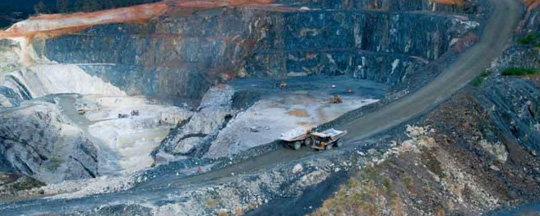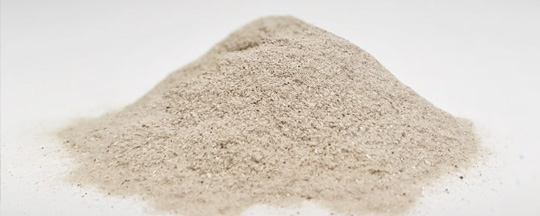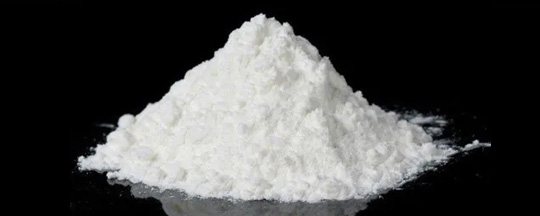Lithium in Hard Rocks
"Hard rocks” is not a scientific or geological term, but it’s colloquially used to describe where roughly 50% of the world’s lithium production comes from today. To be more technical, “hard rocks” means igneous rocks — ie, rocks formed when magma (molten rock) cooled and crystallized, either at volcanos on the surface of the earth, or within the crust. This is opposed to, say, sedimentary rocks, which are formed from layers of sand, silt, and even organic material, compressed over time.
But when we talk about “lithium from hard rocks”, we’re not talking about all igneous rocks. We’re talking about a subset of igneous rocks called “pegmatites”, which have very large interlocking crystals. And even then, we’re talking about a subset of pegmatites whose crystals contain lithium-bearing minerals. There are a handful of lithium-bearing minerals that can be found in pegmatites (minerals such as petalites, lepidolites, and others), but spodumene is the mineral that typically carries one of the highest-concentrations of lithium, and has historically been the focus of lithium mining.
So when we talk about “hard rocks”, we typically mean igneous rocks that are pegmatites due to their large crystals, where the crystals contain a lithium-bearing mineral such as spodumene.

How It's Mined
Hard rocks are typically taken from open pit mines, where they’re drilled and blasted loose, and then carried away to a nearby processing plant. The first processing step is to crush the rocks into a coarse sand. Next, a series of techniques are used to separate the spodumene minerals in the crushed rock, creating a spodumene-rich concentrate (seen directly below).

Now begins a number of steps to extract lithium from the spodumene concentrate. First, the concentrate is “roasted” in a kiln up to 1050 degrees celcius, causing the spodumene crystal structure to expand, which makes the mineral less dense and amenable to lithium extraction. Next, sulphuric acid is added to the spodumene, and heated again to roughly 250 degrees celsius, dissolving all of the elements present into an acidic soup.
This acidic state creates the opportunity to separate – technically known as to 'precipitate' – elements such as iron, aluminum and magnesium that were also present in the spodumene.
Precipitation is achieved by adding new elements such as lime or limestone to the solution, which changes its acidity (or ‘PH level’), and causes a particular element or elements in the solution to solidify. Now they can be removed. Eventually, this process of adding elements and changing PH will precipitate lithium from the solution.

After washing and drying, the lithium may have a grade as high as 99.3%, which can be used for many applications. However, battery-destined lithium typically requires a grade as high as 99.5% or higher, and may require a final treatment to achieve that level of purity.
Considerations
Expense
Mining lithium from hard rocks is expensive, roughly a third or more expensive than mining from brines and sedimentary sources. Miners have to drill the rock, blast it, crush it, and roast it before they’re ready to begin the extensive work of separating the lithium. This additional prep work boosts costs.
A Concentrated Supply Chain
Australia is the biggest miner of lithium hard rocks, accounting for nearly 80% of all hard rock lithium mined, and roughly half of all lithium production in the world, annually. But people are surprised to learn that Australia doesn’t process what it mines. It extracts the rock, crushes it, uses a simple process to separate the spodumene minerals, and then ships that spodumene concentrate to China for the bulk of the processing, including the high-energy steps of roasting. China’s low-cost energy and lower regulatory barriers have helped create this opportunity, but it concentrates much of the lithium supply chain in the hands of a single country.
Plentiful Opportunities
Worldwide, there are far more lithium hard rock deposits than brines deposits that can be mined economically with today’s technology. Lithium hard rocks can be found all over the world, with large untapped deposits identified from Ireland to Finland to the Congo to the United States to Brazil and beyond. What’s more, hard rock deposits are mined with conventional, tried-and-true methods that are well understood around the world, and, if necessary, the later steps of lithium extraction can be farmed out to a third party, as Australia does with China. While hard rock mining is relatively expensive compared to brines, it is far more feasible to launch a new hard rock venture. Of course, looming technology advances such as Direct Lithium Extraction may change that in the future, as well as mining from new, unconventional sources such as claystones.
Noteworthy Projects
• Western Australia (Tianqi Lithium Industries, Albermarle Corp, Mineral Resources, Pilbara Minerals).
